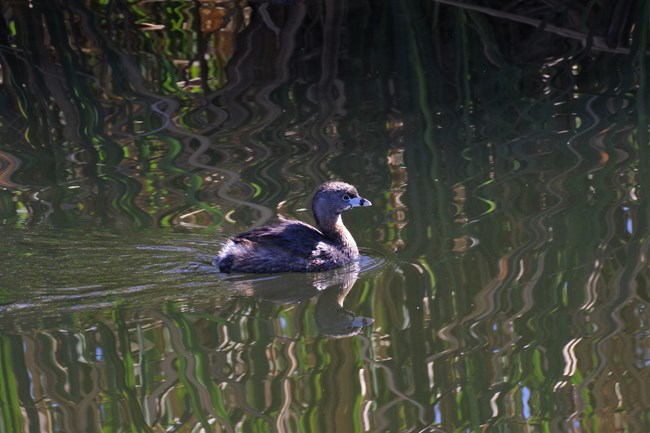
NPS Photo / Soren George-Nichol Podilymbus podicepsPied-billed grebes are commonly found in marshes and wetlands in Mexico and the southern United States year-round and seen in the northern U.S. and southern Canada during the summer breeding season. They are less social and more secretive than many species of grebe. They forage by diving beneath the water and snatching insects, small fish, and other aquatic life. Jehl Jr, J. R. (2017). Feather-eating in grebes: A 500-year conundrum. The Wilson Journal of Ornithology, 129(3), 446-458.
Kaufman, K. (2001). Lives of North American Birds. Houghton Mifflin Harcourt. |
Last updated: May 3, 2021
